Abstract
Thoracic fracturedislocations reportedly lead to an 80% incidence of complete paraplegia. Thus, thoracic fracturedislocations without cord injury are uncommon. There are a few cases of thoracic fracturedislocations in which the neural sparing status was associated with separation of the posterior spinal structures, such as the pedicles and laminae. The authors experienced two cases of thoracic fracturedislocations without spinal cord injury: one was a 50-year-old man who fell from the fourth floor of a building and sustained a T6- 7 fracturedislocation; and the other was a 43- year-old man who was involved in motorcycle accident and sustained a T12 fracturedislocation. Segmental spinal instrumentation and fusion without open reduction was performed in each of the two cases and there has not been any abnormality detected on neurological examination at a minimum follow- up period of 2 years.
REFERENCES
1). Bohler L. Die Technik der Knochenbruchbehandlung im Frieden und im Kriege. 1:9th-11th ed.Maudrich;Berlin: 1943.
2). Bohlman H, Freehafer A, Dejak J. The results of treatment of acute injuries of the upper thoracic paralysis. J Bone Joint Surg. 1985; 67:360–369.
4). Dekutoki M, Conlan S, Salciccioli G. Spinal mobility and deformity after Harrington rod stabilization and limited arthrodesis of thoracolumbar fracture. J Bone Joint Surg. 1993; 75:168–176.
5). Denis F. The three column spine and its significance in the classification of acute thoracolumbar spinal injuries. Spine. 1983; 8:817–831.

6). Denis F, Burkas JK. Shear fracture-dislocation of the thoracic and lumbar spine associated with forceful hyperextension (lumberjack paraplegia). Spine. 1992; 17:156–161.
7). Hanley E, Eskay M. Thoracic spine fracture. Orthopedics. 1989; 12:689–696.
8). Holdsworth F. Fractures, dislocations, and fracture-dislocations of the spine. J Bone Joint Surg. 1970; 52:1534–1551.

9). Liljenqvist U, Halm H, Castro W, et al. Thoracic fracture-dislocation without spinal cord injury: a case report and literature review. Europ Spine J. 1995; 4:252–256.
10). Magerl F, Aebi M, Gertzbein S, et al. A comprehensive classification of thoracic and lumbar injuries. Europ Spine J. 1994; 3:184–201.

11). Miyasaka Y, Satomi K, Sugihara S, et al. Post er ior fracture-dislocation of the thoracic spine without neurologic deficit. A case report and short literature review. Spine. 1993; 18:2351–2354.
13). Shapiro S, Abel T, Rodgers RB. Traumatic thoracic spinal fracture dislocation with minimal or no cord injury. Report of four cases and review of the literature. J Neurosurg(Spine 3). 2002; 96:333–337.
Fig. 2.
Preoperative CT scans and MR images showing translational displacement of the body of T6, shearing off the neural arch with bilateral pedicle fracture.
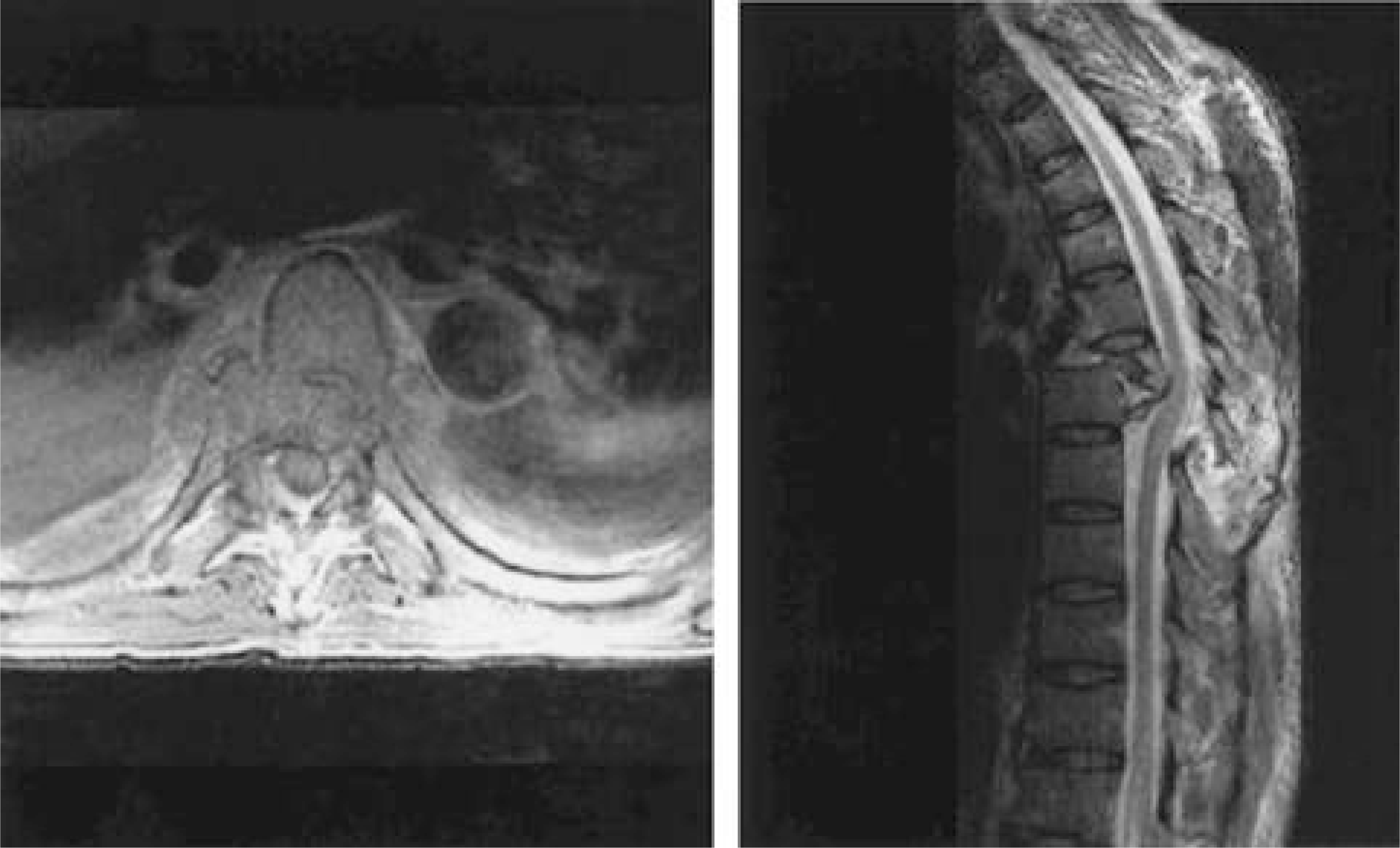
Fig. 3.
Postoperative anteroposterior and lateral radiographs after a posterior fusion (T5-T10) and anterior fusion(T5-T7, arrow).
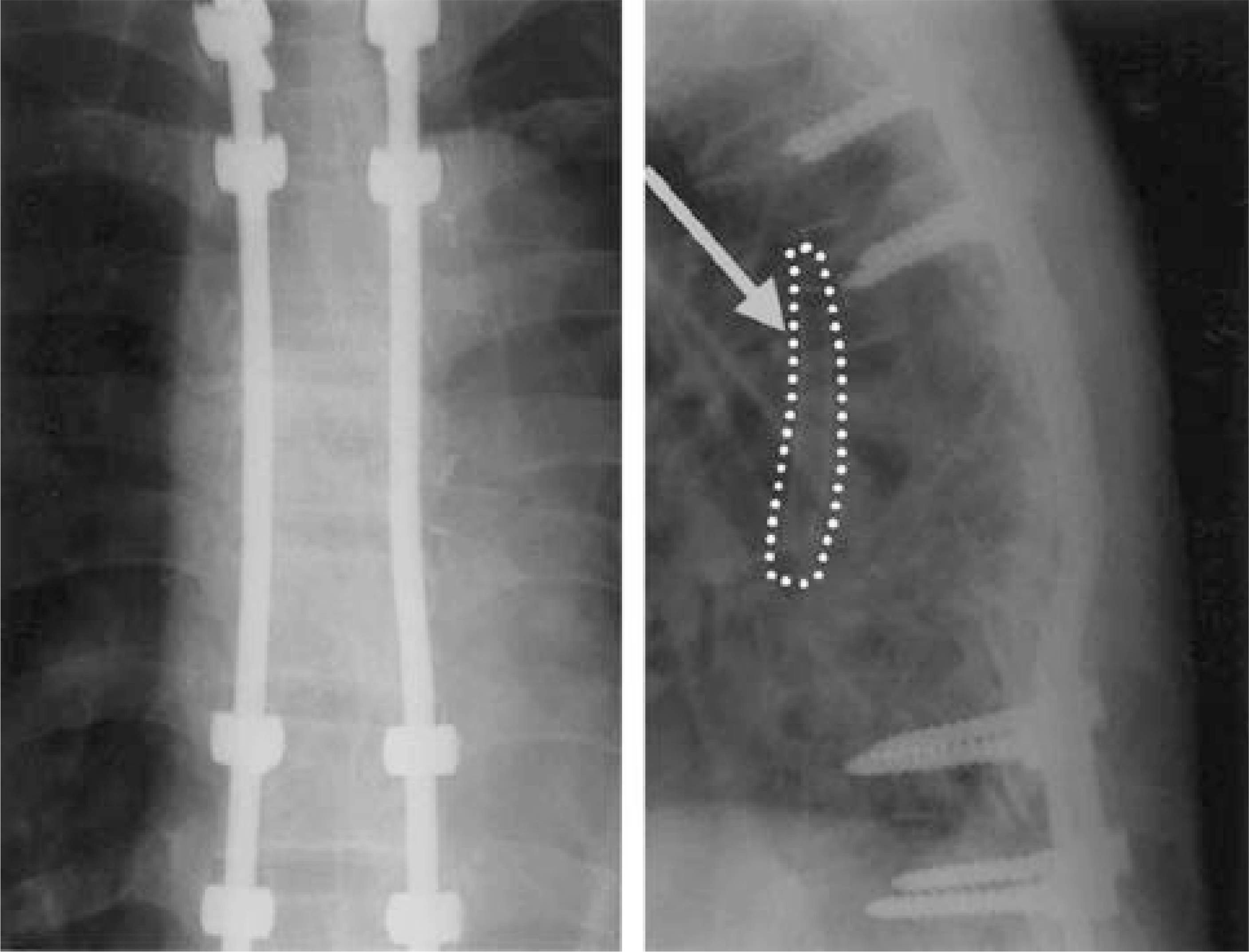




 PDF
PDF ePub
ePub Citation
Citation Print
Print


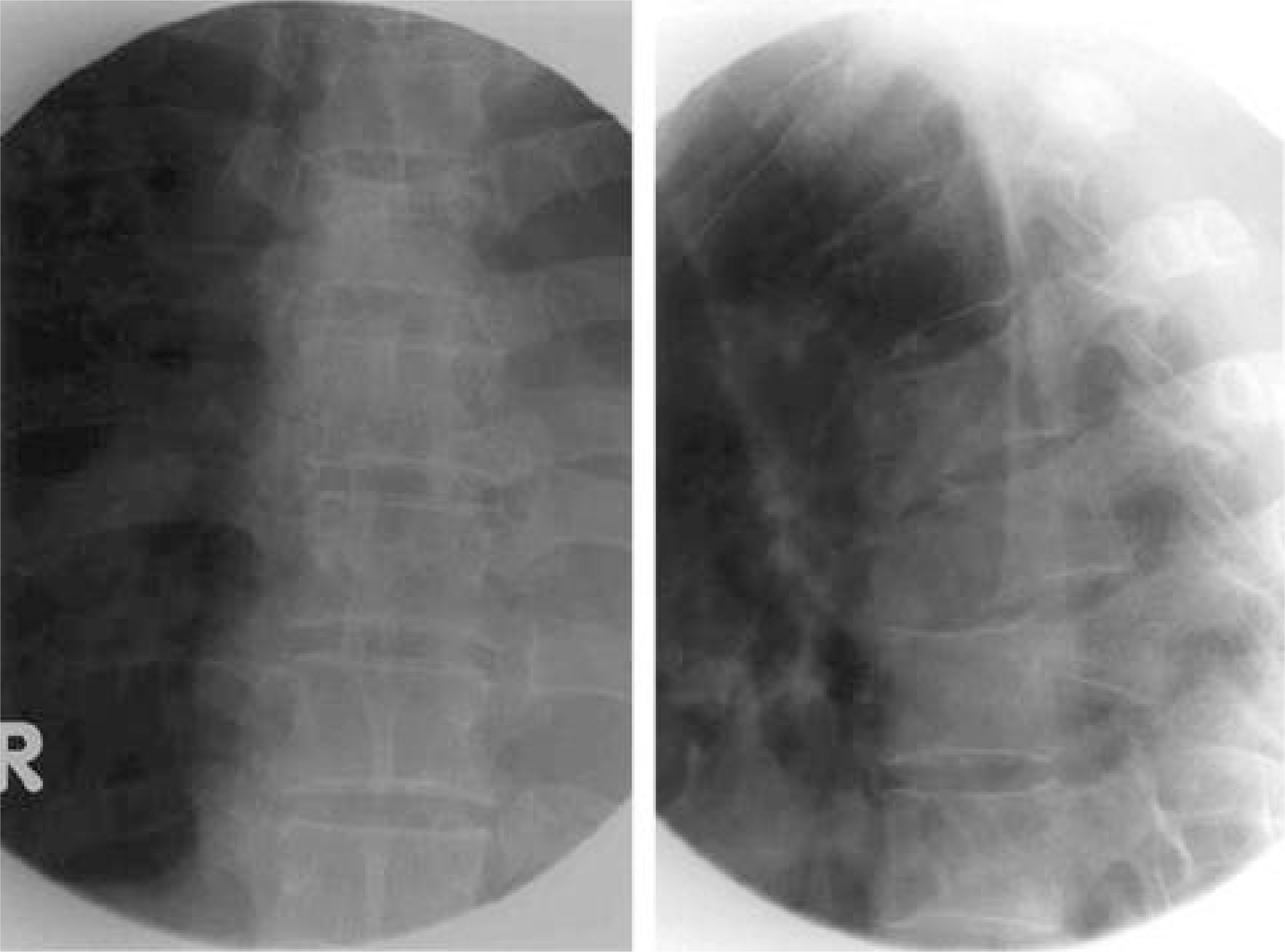
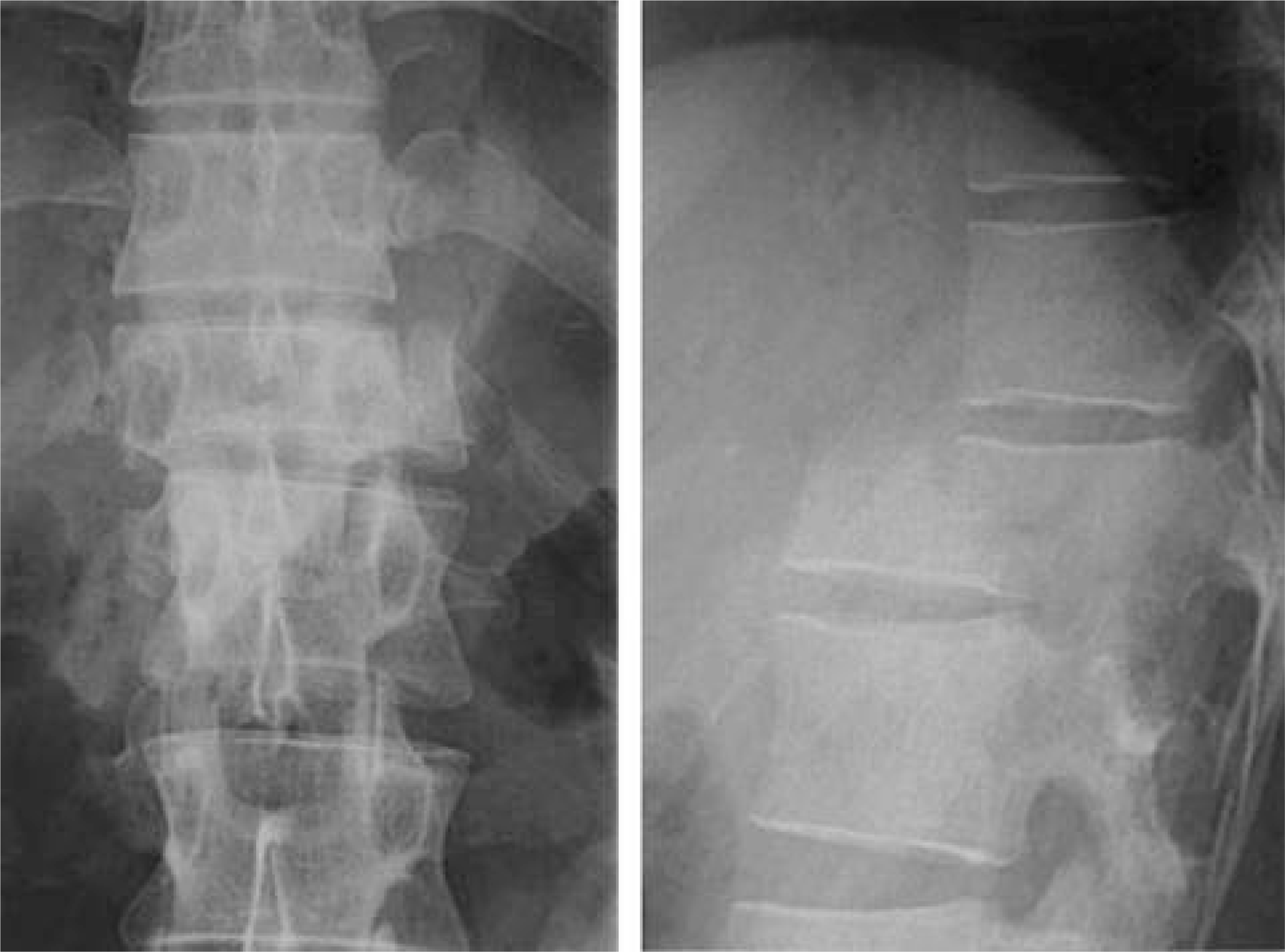
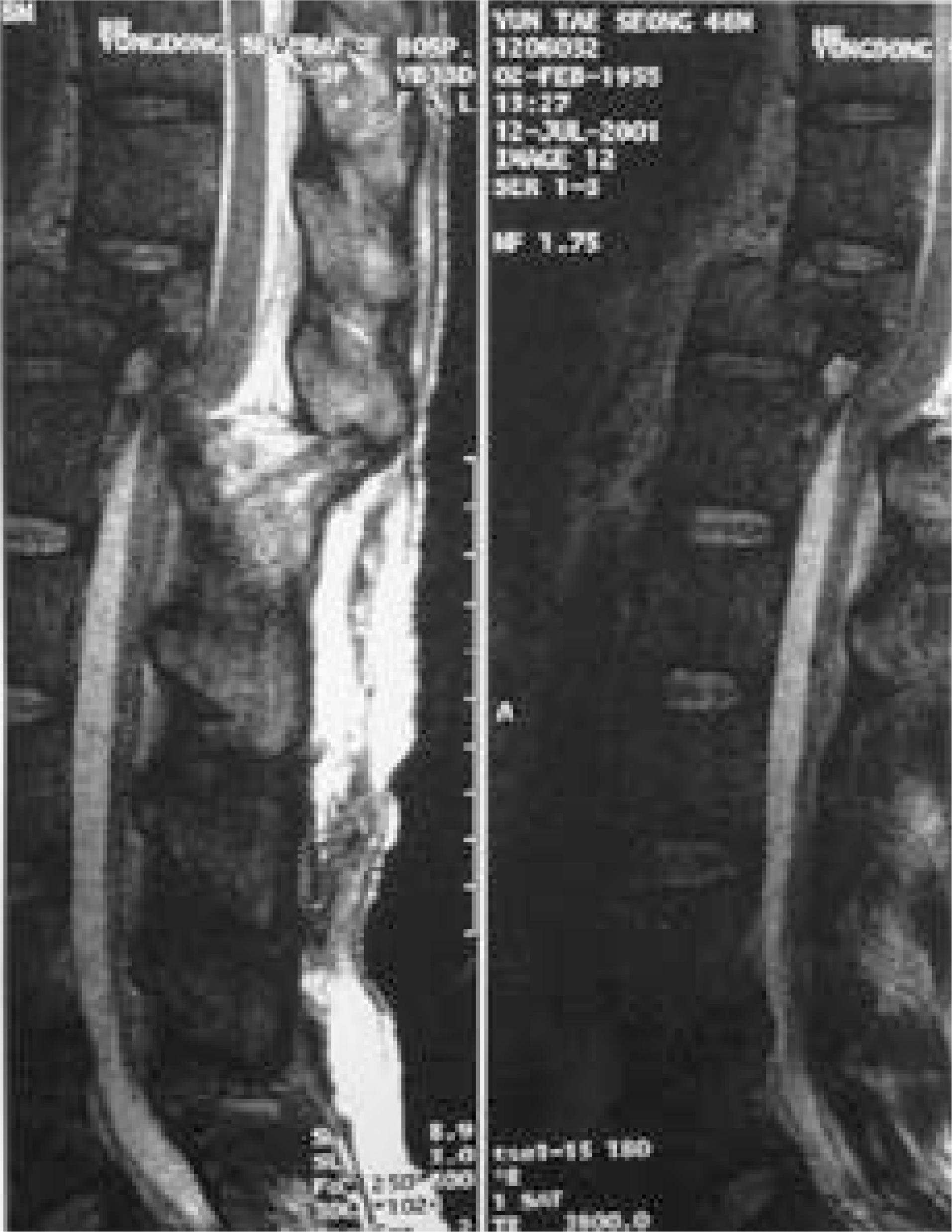
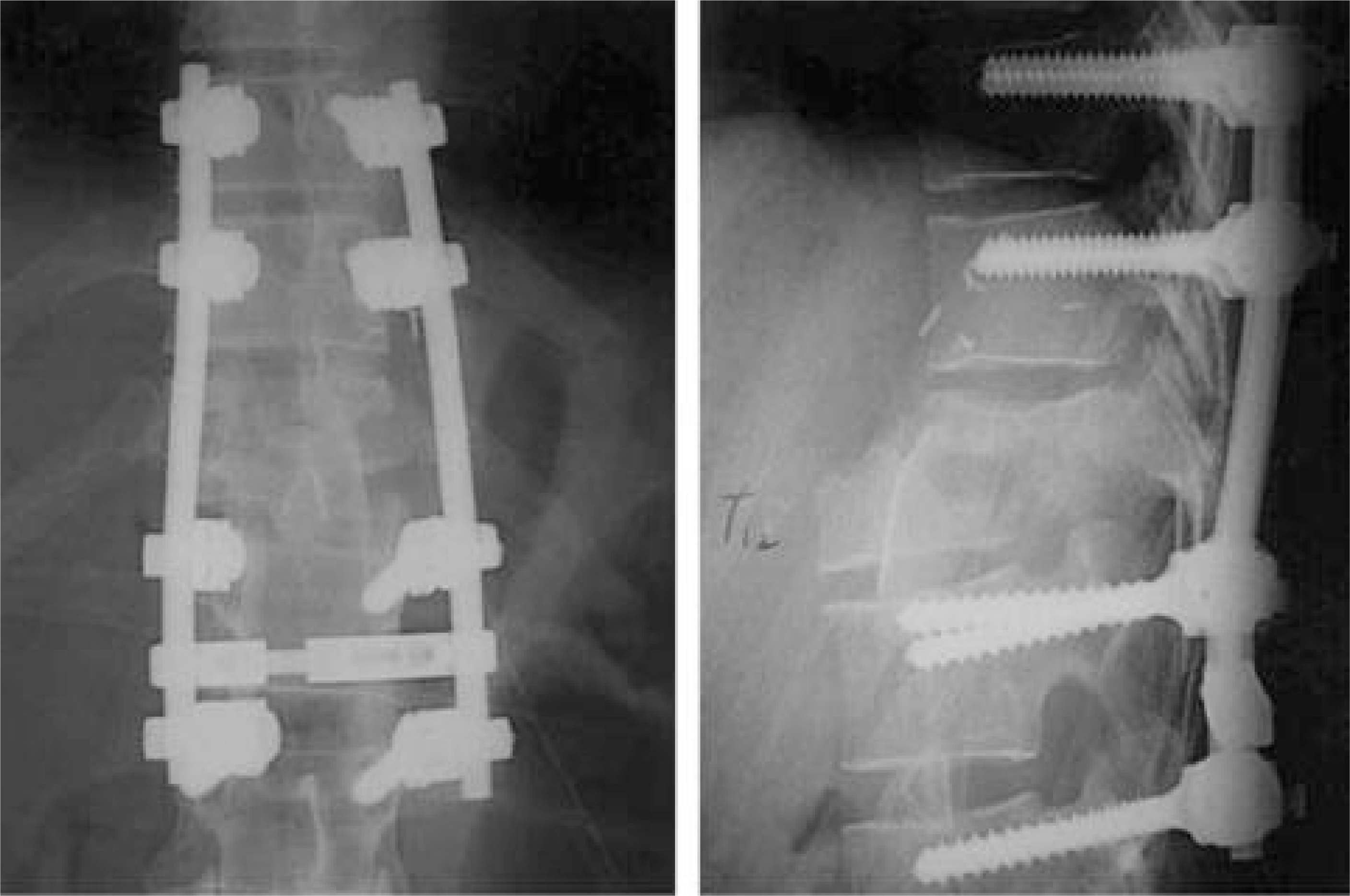
 XML Download
XML Download